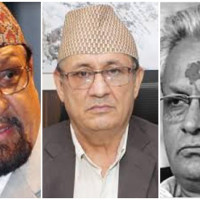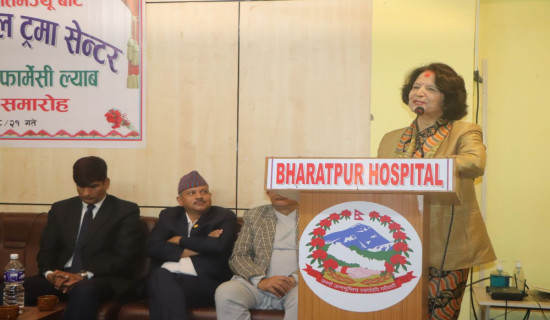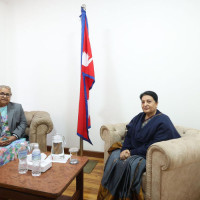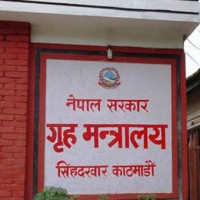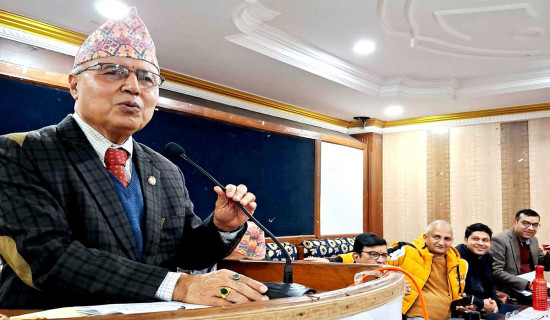- Monday, 8 December 2025
Approach To Sustainable Growth
Not every medicine cures every disease. Similarly, one approach to development, which worked in a certain country, may not work elsewhere. Development is generally contextual. One needs to have a unique approach as per the context, the geography, the socio-cultural setting and others. However, almost all agree on the need for sustainable development. Back in 1987, the World Commission on Environment and Development (WCED) launched the new concept of development, “Meeting the needs of the present generation without compromising the capacities of the future generation to meet their own needs”, as Sustainable Development. Since then, many conservation heroes like Maurice Strong, Rachael Spring, Sir David Attenborough and now Greta Thunberg have been advocating for sustainable practices.
More than 190 countries have jointly committed to achieving the SDGs. Nepal is one of them. However, are we progressing sustainably? Or are we even progressing? These might be questions everyone knows the answer to and no one dares to respond to. The conventional indicators of development are not enough for countries like Nepal, which has its own diverse context, and indicators globally accepted might not be appropriate to get generalised here.
The crowd in the departure section of the international airport, mostly of young Nepali people, the land left uncultivated in the rural areas of Nepal, the cemented structures which are neither aesthetic nor supportive to the environment everywhere, news about conflicts between people of different religions, race, gender and cases of harassments, rapes, murder etc. are enough for us to realise that the approach we are taking in the name of achieving prosperity is incorrect.
Unique approach
As stated earlier, we are unique, so we need a unique approach. Yes, we need to focus on some universal indicators like the 232 global indicators of SDGs. At the same time, we need to focus on cashing in our unique opportunities to counter our unique complications. This article tends to suggest tools which are often ignored, but if considered, have the potential to transform the country, which can be rationally and responsibly called development.
Nepal’s population dynamics offer immense potential for economic development as we are in a demographic dividend, a condition where the productive age group number exceeds the dependent age group. However, other countries are taking advantage of that. We need to have policies that prioritise people over remittance. The state’s main responsibility is to motivate youths by showcasing prospects in Nepal rather than abroad. It won’t be wrong to claim that youths hardly get acknowledged and valued who stay in Nepal. In addition to the state’s role, the role of society should be to glorify the youths doing better in the country than those who are settled abroad.
The complex geographical and geological condition demands unconventional infrastructures and development initiatives. We cannot replicate others’ success stories by merely copying their practices. Nepal’s geography is comparatively young, and so heavy infrastructure can invite fatal disasters. Therefore, we need to opt for nature-based solutions that can solve socio-economic problems without deteriorating nature and natural resources. There have been many research studies and stories proposed by scientists to transform the country by commercialising agriculture and commercialising high altitude herbs, promoting nature-based tourism, community-based conservation and community-based industries which can play key roles in the development. Each region has its own opportunities, and nature-based initiatives can help build that region.
For instance, the Tarai can become prosperous from tangible and intangible heritages; it has the potential to serve the industrial potential of the whole country; the green revolution is viable in this region. Similarly, the hilly region is full of flora and fauna, which can be harnessed for economic development and their conservation as well. The mountain region has the potential to be a nature-based tourism destination, not only for the nation and region but for the whole world. If we look at the directive policies of the constitution of Nepal 2015, green economy, sustainable tourism, smart cities, etc., are emphasised. Even in the report of the Nationally Determined Contribution (NDC) 3.0, most things look promising. However, the question is still there. Is it greenwashing or real?
Social harmony
If we analyse the trending news, social media posts, viral bytes, it seems like there is a huge difference in the mindset of people of different regions, races, religions, gender, among others, and those that are provocative usually become hits. Thus, it can be said that hatred has become the new business pitch, which ultimately widens the gaps between different communities of this generation and different generations. It is high time to mitigate this by educating the youth, societies, and ensuring fairness.
To conclude, development, especially sustainable development, is possible when we understand the context and deliver considering the context, not by replicating others' success stories. That’s why it might not be appropriate to run after development clichés such as 'bottom up or trickle down'. We need to have our very own model, one for “SustaiNepal Development”, and for that, we can start with a baby walk and work on a few things mentioned above.
(The author is a senior officer at the Nepal Tourism Board)




